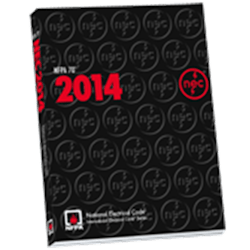NEC: Feeder Conductor Identification, Part 2
In Part 1, we said the rules for feeder identification [215.12] are greatly expanded with the 2014 NEC. And we said this was because of a new subsection [215.12(C)(2)] that adds rules for ungrounded feeder conductors supplied by DC systems.
These rules apply only to feeders supplied by systems operating at more than 50V. And they are all about conductor identification; you must identify the polarity of each ungrounded conductor. Make the identification at all termination, connection, and splicing points.
If the conductor is 4 AWG or larger, identify by tape, tagging, or other approved means. Pretty simple and straightforward, right?.
If the conductor is 6 AWG or smaller, the requirements occupy most of 215.12(C)(2). However, these requirements are more simple and straightforward than they appear at first glance. There’s one set of rules for positive polarity [215.12(C)(2)(a)] and one set for negative polarity 215.12(C)(2)(b)]. But really, they are the same rules; you just change the colors and signs.
You can probably guess the rules for negative polarity, from the following rules for positive polarity:
- Continuous red outer finish.
- Continuous red stripe durably marked on the entire length of the conductor insulation; or a color other than green, white, gray, or black.
- Imprinted plus signs or POS or POSITIVE durably marked (in a color other than green, white, gray, or black) at no more than 12 inch intervals.
